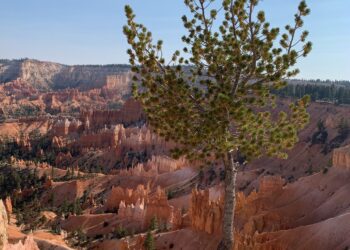By David Tucker EBS Contributor
In the last issue of EBS, this column started with dire numbers concerning our local snowpack and the equivalent amount of water held therein. Since then, it’s been dumping and we’ve moved into an above average winter—thanks, Ullr.
While the improvement in conditions is obviously a welcome relief, it shouldn’t distract us from pressing environmental concerns, shifting weather patterns due to climate change and growing stresses on our water resources. We are by no means in the clear—a warmer than average spring could send all this snow running off faster than normal without bolstering our groundwater aquifers.
In the same way that we have yet to witness demonstrable downturns in the availability of fresh water in the Gallatin River watershed, our dwindling snowpack has yet to have serious repercussions for ecological integrity. This corner of the world has up until now dodged the climate change bullet—but our time will come.
When it does, will we be prepared? Is preparation possible, and what will it take to build a resilient, climate change-adaptable community?
As the saying goes, where there’s a will, there’s a way—and I believe we have the will.
If recent history has shown us anything, it’s clear that this community has the gumption to rally when the going gets tough. Big Sky Relief sprang from nowhere in response to the COVID-19 crisis, raising money, administering test kits and keeping Big Sky relatively safe. We need to take that same approach to ecological restoration, water conservation and climate change preparation.
This should go without saying, but climate change is very real. Montana will be afflicted by abnormal weather patterns that change the availability of fresh water. That change in water distribution will have profound consequences for fish, wildlife, wildfire, human health and the agricultural sector that drives much of Montana’s economy. The outdoor lifestyles we all enjoy will be disrupted and the vibrant community we’ve worked so hard to build will be tested like never before—unless we plan.
More than anything, planning is an insurance policy against an inevitability not far off. In the same way that savvy investors hedge “sure things” against high risks, we can hedge innovative solutions against a catastrophic future. The systems exist, the technology is available, and we have the knowledge—do we have the will?
Do we have the foresight to slow down, take a breath and look to the future, investing capital and common sense in an outcome our grandchildren will be proud of? With COVID, we were caught off guard but were still able to respond. Imagine how well we can adapt to climate change and create a climate change-resilient Big Sky if we start planning now.
Again, solutions exist, and some are already in place, but we need to improve and expand them. Here, the Big Sky Water and Sewer District reuses wastewater to irrigate certain facilities around town, like the golf courses in the Meadow Village, Spanish Peaks and the Yellowstone Club. This prevents wastewater from being directly discharged into the Gallatin River, but it also prevents those courses from irrigating with fresh water.
Currently, the nutrient concentrations in the wastewater combine with pollutants from other sources. The cumulative effect of this nutrient load is a concentration of pollutants reaching our surface waters that is above state standards—in other words, it isn’t good enough.
Big Sky’s soon-to-be-built treatment plant will drastically reduce nutrient concentrations in wastewater, while expanding reuse options for that water resource. High-quality recycled wastewater can mimic the natural water cycle, augmenting water supply and bolstering in-stream flows in late summer and early fall. These are the kinds of innovative solutions we’ll need to incorporate if we wish to continue living in this special place without further harming our cherished resources, like the Gallatin River.
While global warming is already having a measurable impact across the planet, the worst is yet to come to southwest Montana. But holding our breath and hoping for the best is too high risk a strategy. We need a good plan for hedging our bet that we can live here sustainably without compromising the wildlands and wildlife that share our mountain home.
David Tucker is the communications manager for the Gallatin River Task Force.

















